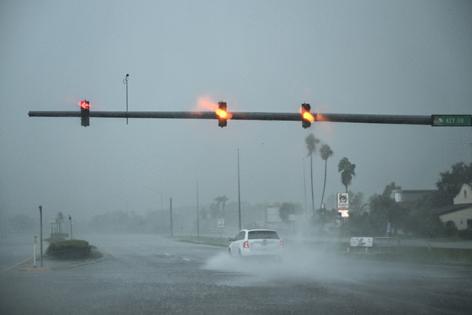Orange growers were looking for a turnaround. Then Milton came.
Published in News & Features
Oranges and some citrus trees are lying useless on the ground in Florida’s groves after Hurricane Milton tore through the state, setting back growers just as they hoped the worst for the struggling industry was over.
The powerful storm moved through key citrus-producing counties after making landfall in Florida Wednesday night, killing at least a dozen people. While it wasn’t as destructive as many feared, the hurricane came at the worst possible time for citrus farmers. Not only did it arrive just ahead of the all-important harvest season, it delivered yet another blow to an industry that was just seeing the glimmers of a turnaround.
Progress had been made in combating a deadly citrus disease called greening that has decimated orange production. Groves were recovering from Hurricane Ian two years ago, after crawling back from Hurricane Irma in 2017.
The industry got further bad news on Friday. The U.S. Department of Agriculture’s first forecast for the 2024-25 season showed Florida orange production falling 16% from a year earlier to 15 million boxes, the lowest level since 1933. That figure doesn’t even account for Milton and is near certain to be reduced later.
“We were very optimistic about the health of our trees going into this season — a nice uniform bloom and a good fruit set in some areas,” said Matt Joyner, chief executive officer of Florida Citrus Mutual. But he said the forecast for the season “is extremely discouraging.”
“Our citrus growers are resilient, but after fighting citrus greening for nearly two decades and having three major hurricanes in the past seven years devastate the heart of our growing region, growers are weary,” he said in a statement Friday.
Joyner added that the industry needs state and federal assistance to support a comeback.
Full damages from Milton are still being assessed, but past storms provide some indication of the severity of impacts to groves. The state’s production dropped more than 60% in the 2022-23 season after Hurricane Ian swept through, causing nearly $250 million in estimated citrus losses. Output dropped by more than a third after Hurricane Irma in 2017.
Storms like Milton have only accelerated the decline of Florida’s citrus industry, which has struggled for decades since the invasive Asian citrus psyllid began spreading an incurable disease across groves. Shrinking production was accompanied by lower demand, especially as some consumers fretted over orange juice’s sugar content. That’s left growers exiting the industry and selling land for real estate, while juice companies try to market pricier products in a competitive beverage market.
Orange juice futures traded in New York rose 4.4% on Friday, after touching a record high last month.
Florida is the country’s biggest grower of oranges for juice and the second largest orange-producing state in the U.S. after California. Brazil, the world’s top producer, makes more than 70% of the world’s orange juice.
Milton’s hurricane-force winds “stretched well” into the northern two-thirds of Florida’s citrus production, said Cade Groman, a forecaster at Commodity Weather Group. The affected areas included the state’s top growing areas. Polk, DeSoto and Highlands counties alone produced more than half of the state’s oranges last year. Harvesting off the ground may be possible, but losses are still likely as much of the fruit for juicing was not yet ripe, Groman said.
Trevor Murphy, a citrus grower in Highlands County, said he has “lost a decent amount of the early crop,” which had been getting close to maturity and was less than 60 days out from starting harvest.
In addition to falling fruits, a few groves also “got torn up pretty good” by tornadoes following the storm, said Ray Royce, the executive director of the Highlands County Citrus Growers Association. Damages so far seem less severe than with Ian, but it is still “way too early to be able to quantify what the crop loss may be,” Royce said.
“Whether that loss comes out to 20% or 40%, I don’t know, it hurts,” Royce said. “Given that growers already had lower production due to greening, they can’t afford to lose a single piece of fruit.”
©2024 Bloomberg L.P. Visit bloomberg.com. Distributed by Tribune Content Agency, LLC.







Comments